Our radio telescopes are detecting mysterious signals from Gala…
- October 1, 2022
- 0
Photo: Bernd Saße, on Pixabay If our eyes could detect the color spectrum of radio waves, every time we look at the sky we would witness a rather
Photo: Bernd Saße, on Pixabay If our eyes could detect the color spectrum of radio waves, every time we look at the sky we would witness a rather


If our eyes could detect the color spectrum of radio waves, every time we look at the sky we would witness a rather peculiar light show: countless flashes of light that change color and disappear in fractions of a second.
These pulses of light have been known for more than half a century to astronomers who observe and study them using radio telescopes. We know that they were formed by a special class of superdense stars in our galaxy called pulsars, which are formed when stars much larger than our Sun run out of fuel and collapse under their own weight.
Like a beacon embedded in the sky, each pulsar emits a beam of light from its magnetic poles, which our telescopes detect as regular pulses as the star rotates and aligns with Earth.
The color change of the flashes is due to galactic material in the form of ionized gas between us and these stars, which acts as a prism that scatters radio waves. Thanks to the scattering, we can determine the amount of material in the orbit of each impact towards the Earth. This is why pulsars are really useful for studying the structure and composition of the Milky Way.
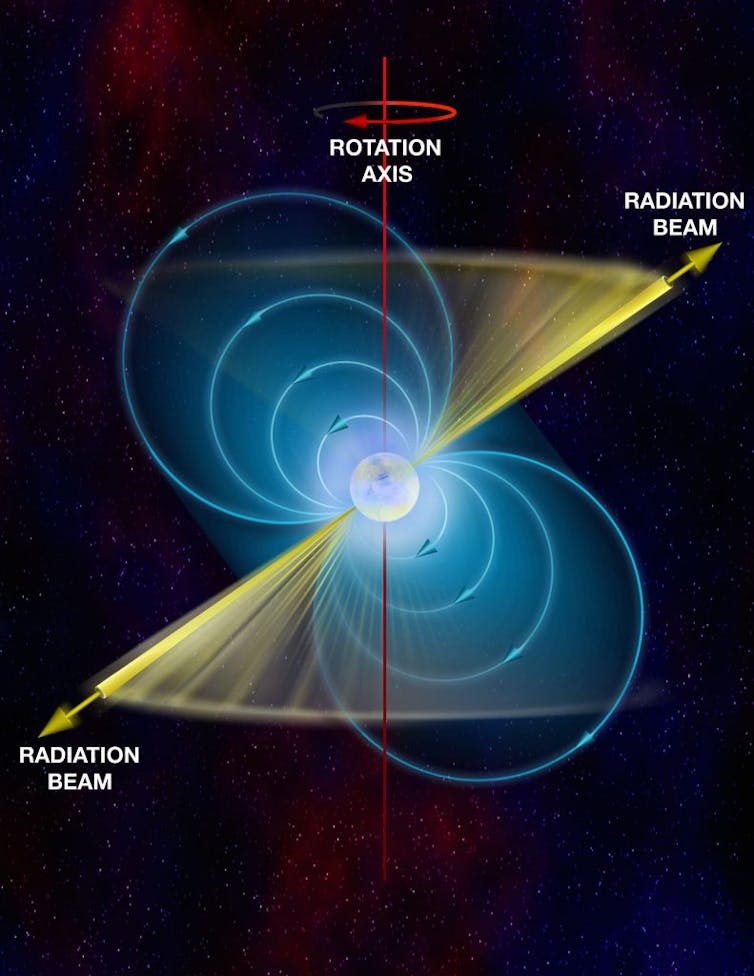
Much more recently, it was discovered that some of the radio flashes we detect daily from Earth are not associated with pulsars in our galactic neighbor. Astronomers refer to these mysterious events. fast radio bursts (FRB) and we have only known of its existence since the first detection was reported in 2007.
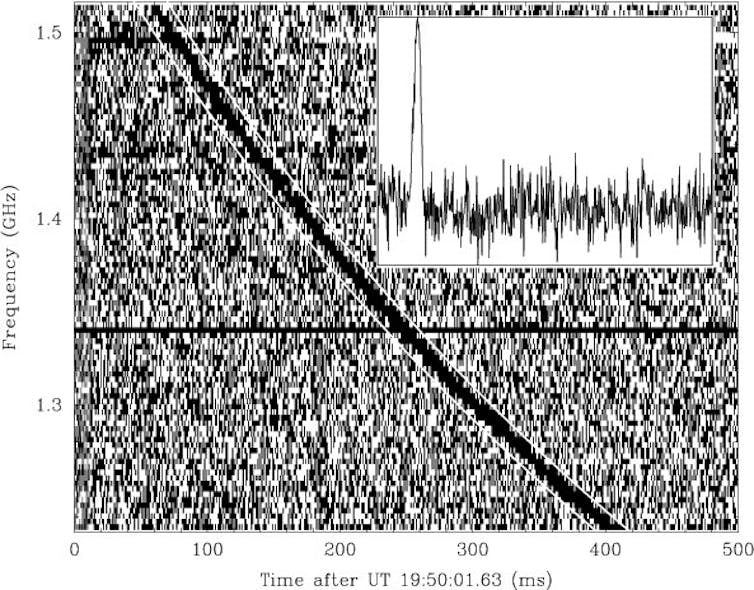
Although morphologically similar, the scattering of FRBs can be enormous compared to the pulses produced by pulsars, meaning a large amount of gas in their path. Another important difference is that the vast majority of FRBs do not recur.
We now know that fast radio bursts come from other galaxies billions of light-years from our own. The fact that we can detect them from Earth means they are millions of times brighter than the pulses of known pulsars, generating some of the most powerful explosions in the entire Universe.
Little else can be said with certainty about the origin of FRBs. So far, more than fifty theories have been proposed to explain this enigmatic phenomenon. The vast majority contain neutron stars, the family to which pulsars belong, as FRB sources. Other hypotheses refer to black holes as possible generators.
There are also experts who suggest that FRBs constitute evidence of still unknown physical objects and processes, fundamental particles hitherto considered hypothetical, and even extraterrestrial intelligence.
The discovery that some FRBs repeat themselves sporadically (they come from the same region of the universe) implies that at least some of the objects that compose them are not self-destructing. And this would be despite the enormous amount of energy released during these eruptions. It is not yet clear whether these objects differ from those created by the rest of the FRB.
These flashes are a fairly common phenomenon. It is estimated that thousands of them are produced every day in the sky. So why do we know so little about them? How did they survive our telescopes for so long?
The random nature and short duration of the vast majority of these radio bursts make them extremely difficult to detect and study. Except for a few repetitive FRBs, it is impossible to predict when and where the next flash will appear in the sky.
Conventional radio telescopes, on the other hand, consist of huge disks in the sky designed to collect as much light as possible in a given direction. This means the exact object we want to observe them (a star, a planet, a galaxy, etc.)
This is why, until a few years ago, the FRB detection rate was so low that there were more theories than signals identified to study its origin and compare it with data from each of these models.
The workspace of FRBs has changed radically since the launch of the CHIME (Canadian Hydrogen Density Mapping Experiment) radio telescope in 2018.
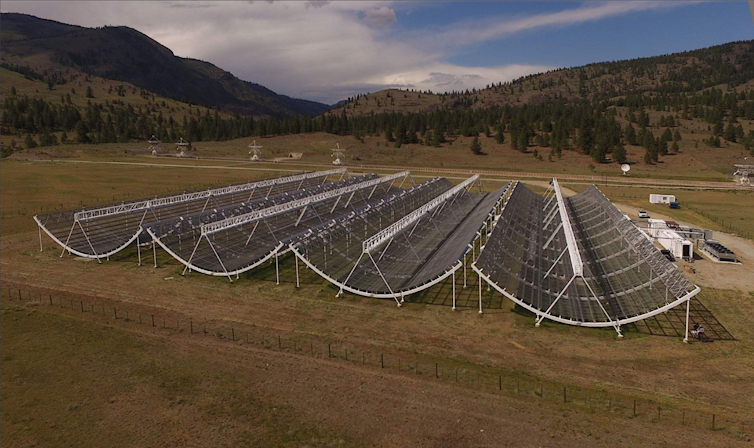
While it took a decade since its discovery to detect the first 50 FRBs using conventional radio telescopes scattered around the world, CHIME found thousands in its first four years of operation. It has become the most powerful radio fast burst detector ever made.
Its unprecedented sensing capability derives from its distinctive design and a special supercomputer (the most powerful of its kind) capable of performing almost a thousand trillion operations per second. These features give CHIME the same observing power as a thousand football field-sized telescopes that specialize in detecting extremely scattered signals.
This major new avalanche of detection allowed the properties of FRBs to be studied in much greater detail.
For example, we now know that there are different classes and that those from repetitive sources tend to last longer and have more complex spectro-temporal structures. However, we do not yet have enough information to determine whether this is due to different generating objects, emission mechanisms or dispersal effects.
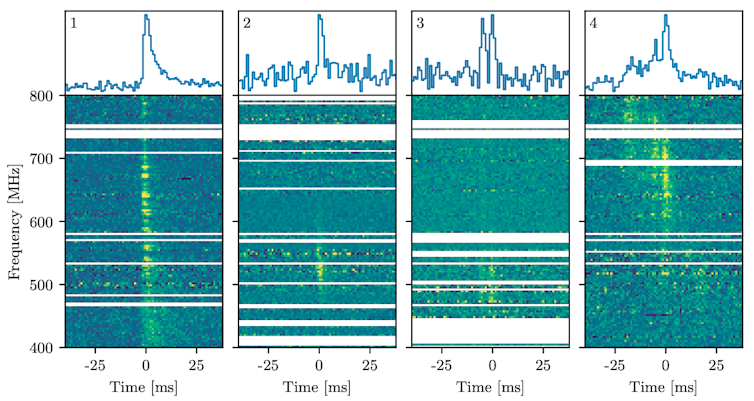
Two new discoveries made thanks to CHIME have been key to understanding the origin and nature of this phenomenon.
The first, published in 2020, was the detection of an extremely bright radio burst in the direction of a magnetar in our galaxy. Magnetars are also neutron stars, but their magnetic fields are thousands of times stronger than an average pulsar. Basically, we are talking about the strongest magnets that exist in the Universe.
While technically this explosion does not constitute an FRB, since it came from our galaxy, this is the first time that an explosion similar to an FRB has been directly associated with a particular object, in this case a magnetar.
The second, published this year, is the detection of an FRB with features never before observed. The explosion lasted more than three seconds, thousands of times longer than an average FRB. Also, instead of a single pulse, it consisted of a strictly periodically repeated series of pulses every 0.2 seconds.
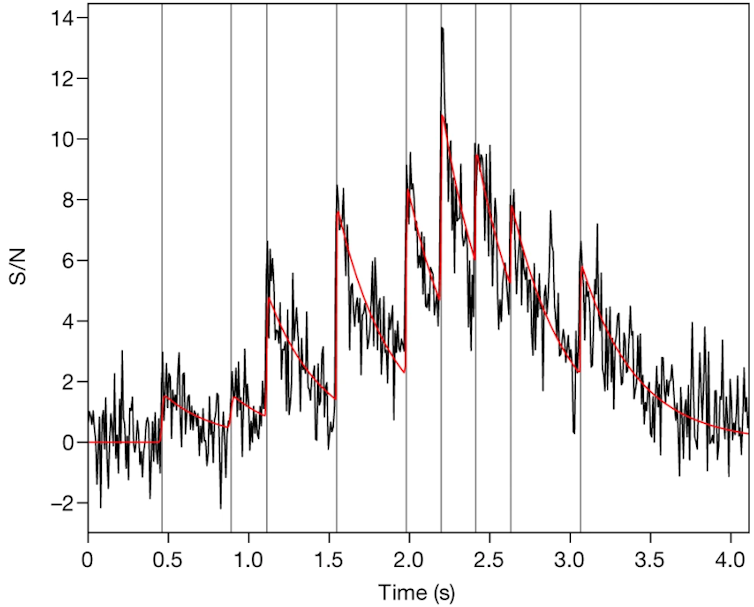
This behavior is quite similar to that of pulsar pulses, except for some as-yet-unknown reasons that those now discovered are millions of times more intense.
These findings support the theory that neutron stars, whether pulsars or magnetars, can produce FRBs. However, not all of our observations are consistent with this theory, so the available evidence does not exclude the possibility of other sources of these explosions in the Universe.
Beyond understanding their origins, much of the scientific community’s interest in FRBs lies in the possibility of using them to study the structure of the cosmos, as we did with the Milky Way thanks to pulsars.
FRB applications range from detecting weak gas penetrating intergalactic space to studying the magnetic properties of the Universe at cosmological scales; and from the discovery of the earliest stages of the evolution of the Universe to the more recent investigation of the mysterious dark energy responsible for the accelerated expansion of the cosmos.
These signals from other galaxies have the potential to help us solve major puzzles in modern astrophysics and cosmology, many of which have profound implications for our understanding of fundamental physics and the Universe.
The discovery of FRBs certainly opened a new window to explore the cosmos.![]()
Juan Mena-Parra, Assistant Professor, Dunlap Institute and David A. Dunlap Department of Astronomy and Astrophysics, University of Toronto
This article was originally published on The Conversation. Read the original.
Source: El Nacional
Alice Smith is a seasoned journalist and writer for Div Bracket. She has a keen sense of what’s important and is always on top of the latest trends. Alice provides in-depth coverage of the most talked-about news stories, delivering insightful and thought-provoking articles that keep her readers informed and engaged.